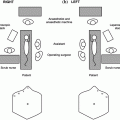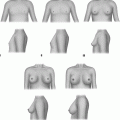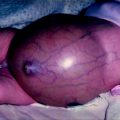Clinical
∙ Comprehensive medial history and physical examination
∙ Anthropometrics: waist circumference, weight, height
∙ Systolic and diastolic blood pressure
∙ Tanner stage (≥4)
∙ Evaluation by pediatric psychologist or psychiatrist to screen for cognitive and psychiatric disorders, assess emotional maturity, decisional capacity and family support
Laboratory testing
∙ Fasting lipid profile
∙ Fasting insulin and glucose, hemoglobin A1C
∙ Oral glucose tolerance test (if elevated fasting glucose)
∙ Liver profile
∙ TSH
Other diagnostic evaluations
∙ Polysomnography (if symptoms of obstructive sleep apnea [snoring, daytime somnolence])
∙ Echocardiogram
∙ Electrocardiogram (and exercise stress test if prolonged QT interval)
∙ Urea breath test or endoscopy to exclude helicobacter pylori infection (if unexplained anemia or history of abdominal pain/ulcers)
∙ Abdominal US (if suspicion for gallstones or chronically elevated liver enzymes)
∙ Bone age (if needed to assess skeletal maturity)
Medical and psychiatric comorbidities, and family dysfunction identified during the preoperative screening assessment must be fully explored by appropriately trained specialists. It is not at all uncommon for this initial bariatric evaluation to discover numerous previously unidentified or poorly managed problems that require more indepth attention by specialists and thus close follow-up and coordination of care during the preoperative phase. The team must therefore have a plan for who on the team will be responsible for the active management or coordination of care for active health and psychosocial problems identified, since the adequacy of management of such problems may well bear on the ultimate success of the weight loss intervention. In the Surgical Weight Loss Program for Teens at Cincinnati Children’s Hospital Medical Center, this time-intensive, but critical function is performed by an experienced nurse practitioner with expertise in adolescent medicine; a social worker (in conjunction with mental health workers as needed) then coordinates further assessment and management of psychosocial issues.
The final decision-making regarding whether to proceed with surgery must be made by the multidisciplinary team, taking into consideration both objective and subjective assessments of the severity of obesity and obesity-related comorbid conditions, risk of future health problems, failure to lose weight through more conventional means, psychosocial status and support, and patient and family readiness for surgery.
Patient Selection
Adults with a BMI ≥40 kg/m2 or a 35 kg/m2 with significant current comorbidities are considered candidates for weight loss surgery. In pediatrics, anthropometric features such as height, weight and BMI are usually described by percentile curves, based on a reference population. Thus in adolescents, BMI percentile curves will vary by age and gender. This creates some difficulty using an absolute BMI threshold during a period of continued linear growth. However, given that the reference data for extremely high BMI percentiles (e.g., >97th) are not reliable, using a percentile cutpoint for consideration of surgery may well overestimate the number of adolescents who need consideration of surgery [45]. Thus, it is prudent for the present time to use hard BMI values rather than percentiles for consideration of surgical intervention. As more information becomes available about the outcomes of weight loss surgery in adolescents, as well as the natural history and distribution of severe obesity in adolescents, it is possible that an age-specific threshold (percentile or z-score) will become more appropriate than a BMI threshold.
Pratt et al. [44] (Table 16.2) have suggested that BMI criteria for weight loss surgery in adolescents include a BMI ≥35 kg/m2 with one or more severe obesity-related disorders (e.g., type 2 diabetes mellitus, obstructive sleep apnea, pseudotumor cerebri, or severe steatohepatitis), or a BMI of ≥40 with more minor comorbidities (hypertension, dyslipidemia, mild steatohepatitis, significant impairment in quality of life, or arthropathy). These criteria build upon other work in the field [28, 43] and are reasonable, placing appropriate emphasis on the principle that surgery should only be considered when a strong medical or psychological rationale for the intervention can be documented.
Table 16.2
Criteria for adolescent bariatric surgery
∙ BMI ≥35 kg/m2 and a severe comorbidity that has significant short-term effects on health, such as severe obstructive sleep apnea, diabetes mellitus type 2, pseudotumor cerebri or severe and progressive steatohepatitis |
∙ BMI ≥40 with other weight related medical and psychosocial comorbidities |
∙ Physical maturity, defined as completing 95% of predicted adult stature based on bone age or reaching Tanner stage IV. This criterion is based on theoretical concerns that rapid weight loss after bariatric surgery might inhibit statural growth if an adolescent has not reached near adult height |
∙ History of sustained efforts to lose weight through changes in diet and physical activity. There is no evidence that prolonged preoperative weight management programs enhance selection of patients for weight loss surgery. However, consistent attendance in such a treatment program may be a valuable indicator of the patient’s ability to understand and adhere to medical and nutritional recommendations postoperatively, and provide information about the willingness of the family to support treatment efforts |
It should be recognized that some findings during the initial evaluation may represent contraindications for surgery (Table 16.3), and that these criteria are only to be used as a starting point to select patients who are most likely to safely benefit from weight loss surgery. Crucial in the process is that the multidisciplinary team with pediatric expertise considers whether the patient and family have the ability and motivation to make lifestyle changes including consistent adherence to prescribed medical regimens (including preoperative use of micronutrient supplements). This process often takes months of regular visits to the clinic. The team should carefully consider during this evaluation phase whether the candidate demonstrates the ability to understand what dietary and physical activity changes will be required for optimal postoperative outcomes. Also, the team should consider whether there is evidence of mature decision-making, with appropriate understanding of potential risks and benefits of surgery, and whether the adolescent has support but not coercion from family members.
Table 16.3
Contraindications for surgical weight loss procedures in adolescents include
∙ Medically correctable cause of obesity |
|---|
∙ An ongoing substance abuse problem (within the preceding year) |
∙ A medical, psychiatric, psychosocial, or cognitive condition that prevents adherence to postoperative dietary and medication regimens or impairs decisional capacity |
∙ Current or planned pregnancy within 18 months of the procedure |
∙ Inability on the part of the patient or parent to comprehend the risks and benefits of the surgical procedure |
Reproductive Health Concerns
Since most (e.g., 75–80%) of the candidates presenting for bariatric surgery are female, gynecologic issues, fertility, and risk-taking behaviors are also important preoperative considerations. One-fourth of the adolescent girls seeking bariatric surgery are sexually active [46]. We have documented a 13% pregnancy rate among adolescents who underwent bariatric surgery, more than double the regional base rate [47]. Since most recommend avoidance of pregnancy for 12–18 months postoperatively [39], it is important that adolescent females undergoing bariatric surgery have comprehensive contraceptive counseling and be offered effective contraceptive options prior to surgery. In much the same way that contraception is strongly advised when prescribing potentially teratogenic medications such as isotretinoin (Accutane), we have found that with proper explanation and counseling, the majority (92%) of girls are willing to undergo intrauterine device placement at the time of bariatric surgery [46]. Additional benefit from the locally acting progestin within this device is the near cessation of menstrual blood loss in girl who may be at risk of iron deficiency after gastric restrictive surgery or bypass. Finally, the highly prevalent reproductive health concerns (including sexually transmitted disease prevention) among obese adolescent girls and boys should be addressed prior to surgery by a qualified healthcare provider.
Conclusions
The recommendations contained herein regarding assessment and patient selection are intended to be a starting point based on the best judgement of medical and surgical specialists. Some studies that will validate these recommendations are underway, including the NIH funded, multicenter prospective Teen-LABS study (Teen-LABS.org) [48] and associated ancillary studies. As the evidence base related to adolescent bariatric surgery grows, so will the refinement in patient assessment guidelines.
References
1.
Freedman DS, Mei Z, Srinivasan SR, Berenson GS, Dietz WH. Cardiovascular risk factors and excess adiposity among overweight children and adolescents: the Bogalusa Heart Study. J Pediatr. 2007;150(1):12–7 e12.
2.
Thompson DR, Obarzanek E, Franko DL, Barton BA, Morrison J, Biro FM, et al. Childhood overweight and cardiovascular disease risk factors: the National Heart, Lung, and Blood Institute Growth and Health Study. J Pediatr. 2007;150(1):18–25.CrossrefPubMedPubMedCentral
Stay updated, free articles. Join our Telegram channel

Full access? Get Clinical Tree






